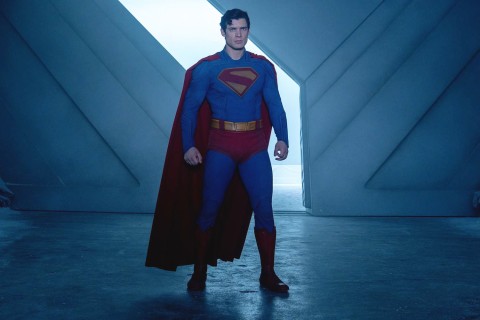Rock Island's 12-toed Jesus
Why did an early 20th-century artist leave us with a polydactyl Jesus? I have a few guesses.

I broke my fourth toe last week. Clumsiness in a hotel room caused the injury as I stumbled in the dark to turn down the thermostat. You’d think I was booting a field goal, given the force with which I kicked that steel bed frame. But the football went nowhere, the bed stayed still, and I went down. The pain was excruciating. The inconvenience of a broken toe temporarily affects one’s gait as the other four toes pick up the slack. I wonder if we’d walk a bit more naturally if we had an extra toe to spread out the pain.
In the chapel of Augustana College in Rock Island, Illinois, the stained-glass window high above the altar depicts a six-toed Jesus ascending into heaven. Why an early 20th-century artist elected to leave posterity with a polydactyl Jesus is anyone’s guess. I’ll venture a few of my own, in no particular order.
Read our latest issue or browse back issues.
Perhaps the artist wanted to show that physical abnormality is perfectly acceptable or even lovely in the eyes of God. In a world where so many judgments are cast upon the appearance of others, this purpose is not inconceivable.
If God has put all things under Jesus’ feet, as various writers in the New Testament assert, then Jesus definitely needs big feet. Whether putting everything beneath those feet means that all creation has been placed under his authority or that every enemy is going to be stomped on, a couple of extra toes would seem to come in handy.
Maybe the artist was just having fun. Maybe he was just goofy that day, or bored. It’s possible he honestly miscounted, though that’s hard to picture. Then too, there always the chance he had a stubbed toe of his own that caused him to long for an extra digit as he painted the glass.
In 2 Samuel 21 there’s a story about a freakish Philistine giant with six fingers on each hand and six toes on each foot, who was was killed by a nephew of David. It probably doesn’t make much biblical sense, however, to link Jesus to an early enemy of Israel.
Nobody knows exactly what to do with the stories of Jesus walking on water. We could strip them of their mystery and desecrate them with literalism, positing that large feet were an asset for traversing waves. (I’d need binoculars to see if the artist of the Augustana window actually webbed the six toes of Jesus.)
What if the artist loved “This Little Piggy”—the nursery rhyme favorite of parents and toddlers—but wanted to provide a vegetarian option? He reworked the rhyme to add an extra digit: “This little piggy went to market; this little piggy stayed home; this little piggy had roast beef; this little piggy had brussels sprouts; this little piggy had none; and this little piggy went wee, wee, wee, all the way home.”
Could it be that Jesus had six toes on each foot to represent the 12 disciples? Every one of the 12 had one of Jesus’ toes to wash at the Last Supper.
For readers’ sake, I’d best put my foot down right now and end this column, but not before reminding you to turn on the light before adjusting the thermostat in your next hotel room.
A version of this article appears in the December 6 print edition under the title “Polydactyl Jesus.”






